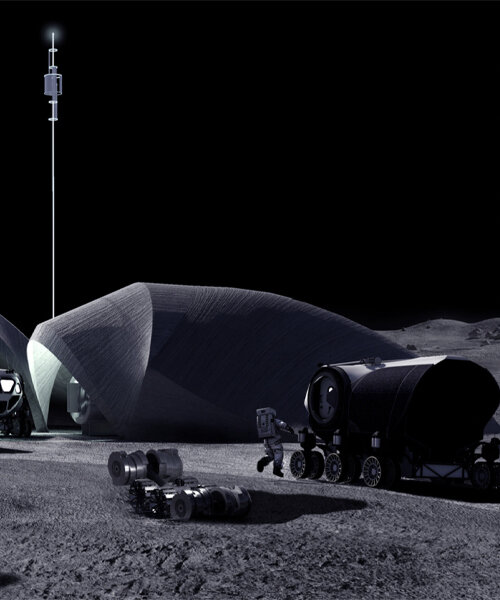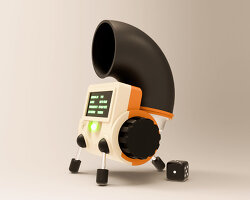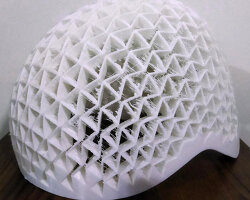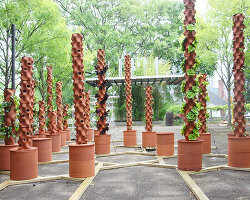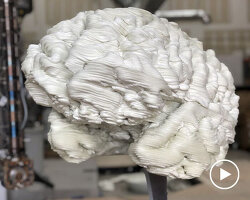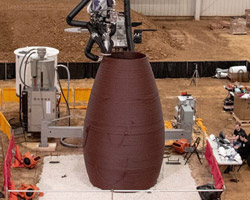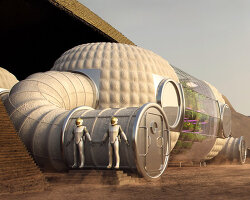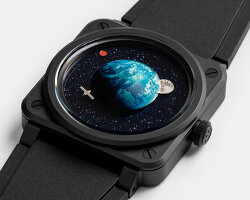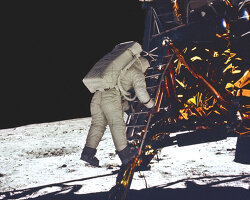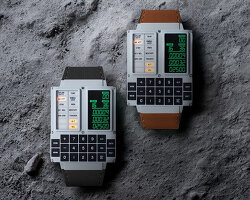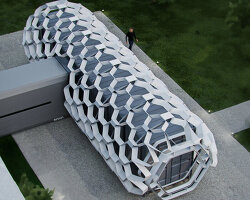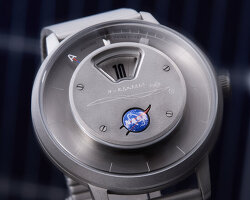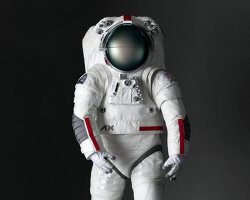AI SPACEFACTORY presents LINA, a 3D-printed lunar outpost
LINA (Lunar Infrastructure Asset) is a 3D-printed lunar outpost that stems from a multi-year collaboration between AI SpaceFactory and NASA to develop technologies for lunar surface construction within the timeframe of the Artemis Mission: humankind’s return to the Moon.
Indeed, within the next decade, the Artemis Mission will send astronauts to the Lunar South Pole, a region described as ‘The Peak of Eternal Light,’ where the sun is omnipresent and resides at a low angle of incidence. This site is likely to be near a crater rim that yields long-duration illumination for solar power collection and in proximity to permanently shadowed crater regions, which are of interest for water harvesting operations.
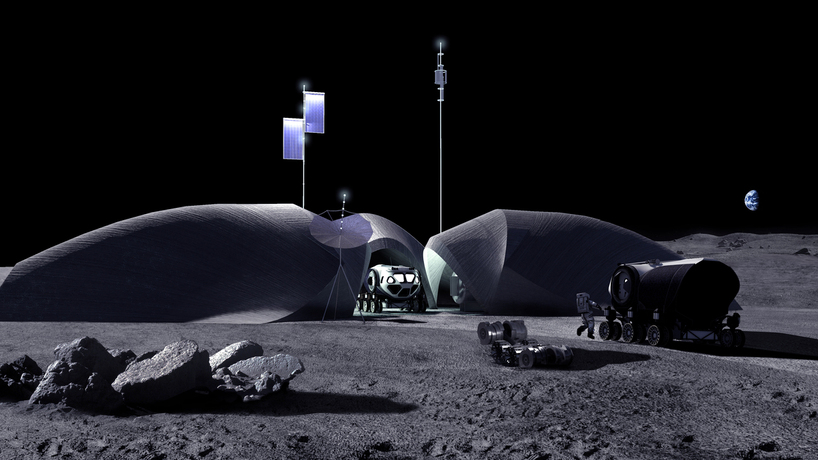
LINA’s ultra-thin shell supports a 2.7-meter thick, protective regolith overburden, resulting in a lightweight, mass-optimized structure that protects against lethal cosmic radiation
lightweight, extendable, and mass-optimized structure
LINA is a humble yet strategic approach that is evocative and adaptive to the native terrain of the Moon. Unlike MARSHA, the Mars surface habitat by AI SpaceFactory (see more here), which was designed as a free-standing object, LINA is extensible from a single structure to a cluster of units that become a larger and more systemic lunar outpost. Its orientation provides self-shading, leveraging topographical features in the lunar landscape to shield it from lethal solar and cosmic radiation.
Jointly with NASA (see more here), LINA will be constructed by autonomous robots on the south pole of the Moon near the Shackleton crater, where near-continuous sunlight on the crater’s peaks could allow for solar power while perpetual shadow on the crater’s interior would allow harvesting of water ice.
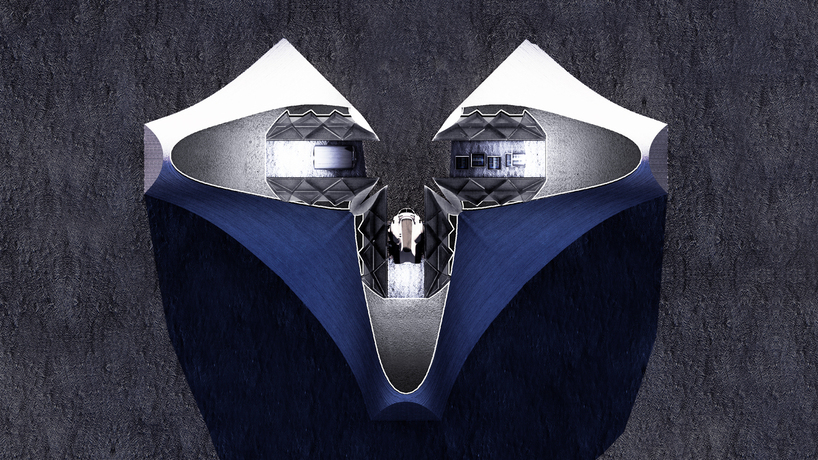
LINA is sized to shelter the Space Exploration Vehicle, telecommunication devices, and habitation modules
designing for maximum protection and durability
The outpost’s 3D printed Romanesque arches, which can withstand high compressive loads with minimal material, would be topped with 2.7 meters of lunar regolith. This would provide maximum possible protection from radiation, micrometeorites, lunar seismic activity (moonquakes), and extreme thermal swings. In addition, the strength of AI SpaceFactory’s polymer composite will give way to a sustainable and long-lasting structure that could support long-term habitation and travels to more planets.
To construct LINA, AI SpaceFactory is advancing the development of a Space-rated 3D printing system designed to operate in a vacuum with temperatures ranging from -170° to 70°C. The first such prototype, built jointly with NASA, is undergoing testing at the Kennedy Space Center in a lunar environmental chamber designed to mimic the exact conditions at the Lunar south pole. The 3D-print material, formulated by AI SpaceFactory from BP-1 lunar simulant, was synthesized by NASA’s Granular Mechanics and Regolith Operations Lab and subsequently validated in static extrusion tests performed in a vacuum.
‘As we broaden the horizon of what is possible in the future, LINA is an architectural and technological milestone that sets a precedent for pursuing explorations more distant than our moon. Designed with a life expectancy of at least 50 years, LINA is sized to shelter a pressurized, manned rover such as the Space Exploration Vehicle, telecommunication devices, and habitation modules,’ shares the team.
The structural design incorporates three separate units that share a communal courtyard and integrates a photovoltaic tree to capture and harvest solar energy directly. Each unit area is 75 square meters while the central staging area is 90 square meters and the 3D-printed shell spans 8 meters by 9.4 meters with a height clearance of 5 meters.
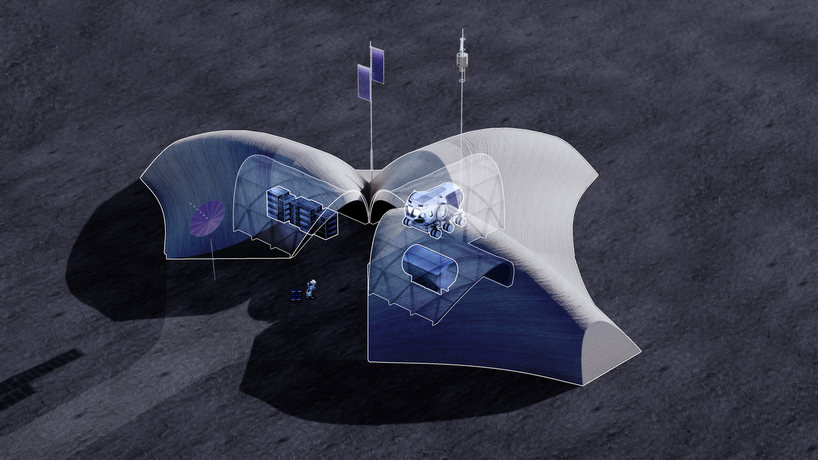
LINA’s primary function is to protect astronauts and critical mission assets against hazards such as galactic cosmic radiation exposure, solar particle events, moonquakes, and micrometeoroid impacts
LINA will be manufactured with a high-performance mixture of native lunar regolith and Earth-sourced polymer binder. To minimize the polymer mass imported from Earth, AI SpaceFactory studied numerous configurations from thick to thin shells, adopting a parabolic cross-section to keep the loads in compression.
Ultimately, the company found that a thin shell with a diagonal brace rib had the most efficient ratio between weight and load-carrying capacity. A 5-meter diameter circle inscribes this specific geometry to match a large rocket fairing, meeting the ground at a 70-degree angle to maximize internal space.
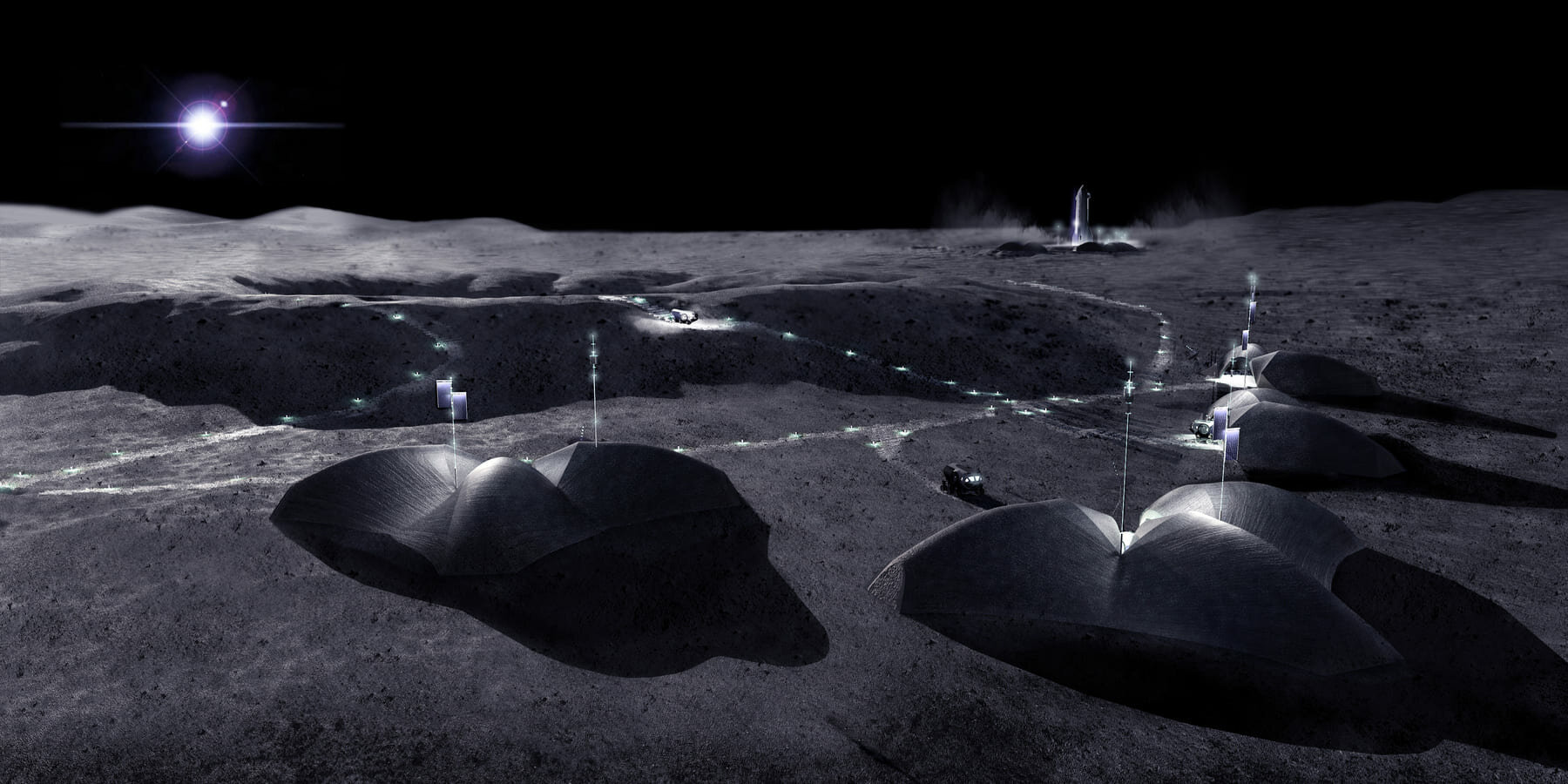
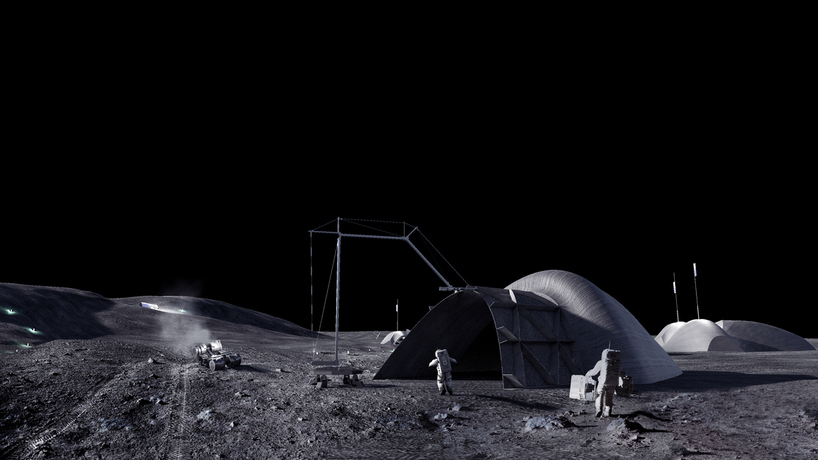
LINA to be 3D-printed with a high-performance mixture of native lunar regolith and Earth-sourced polymer
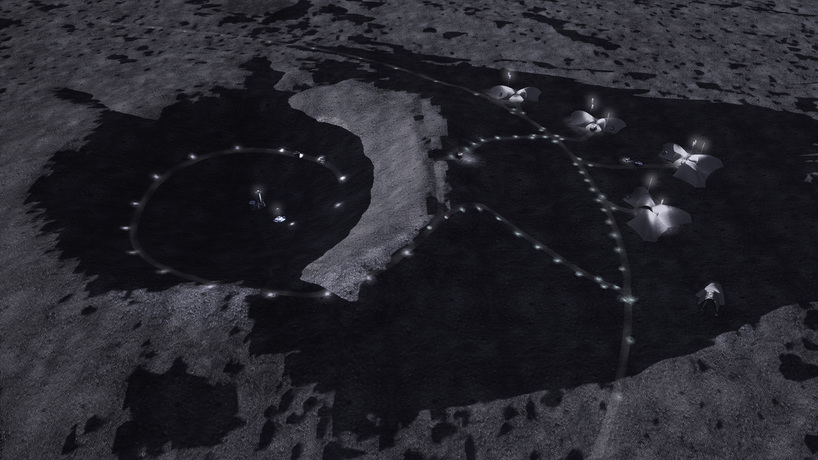
LINA is sited near the south pole of the Moon

LINA extends from a single structure to a cluster of units that can form a larger and more systemic lunar outpost
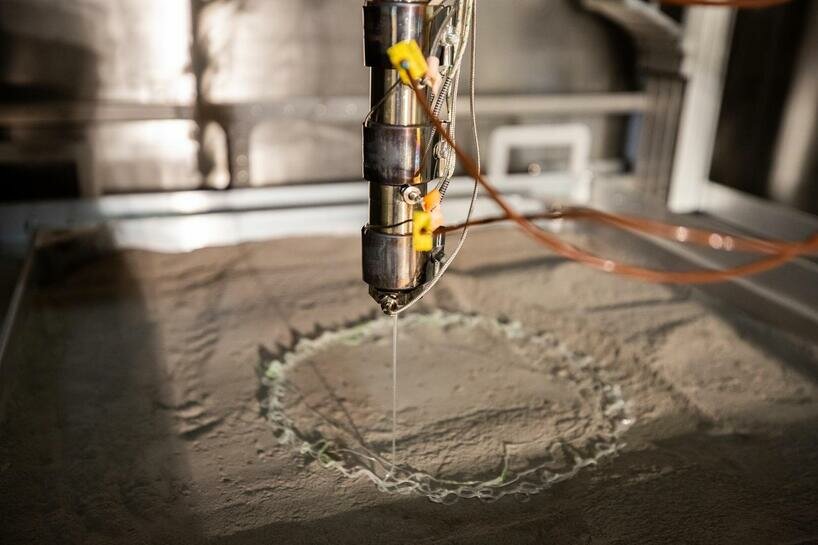
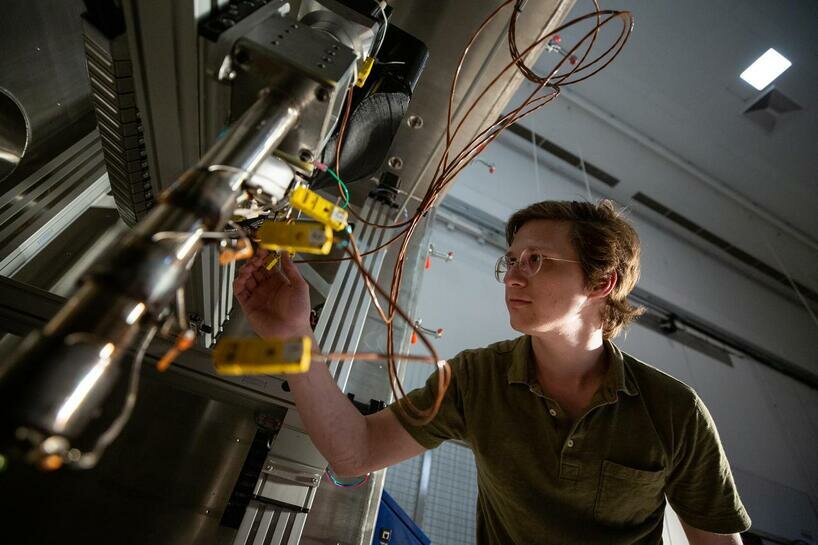
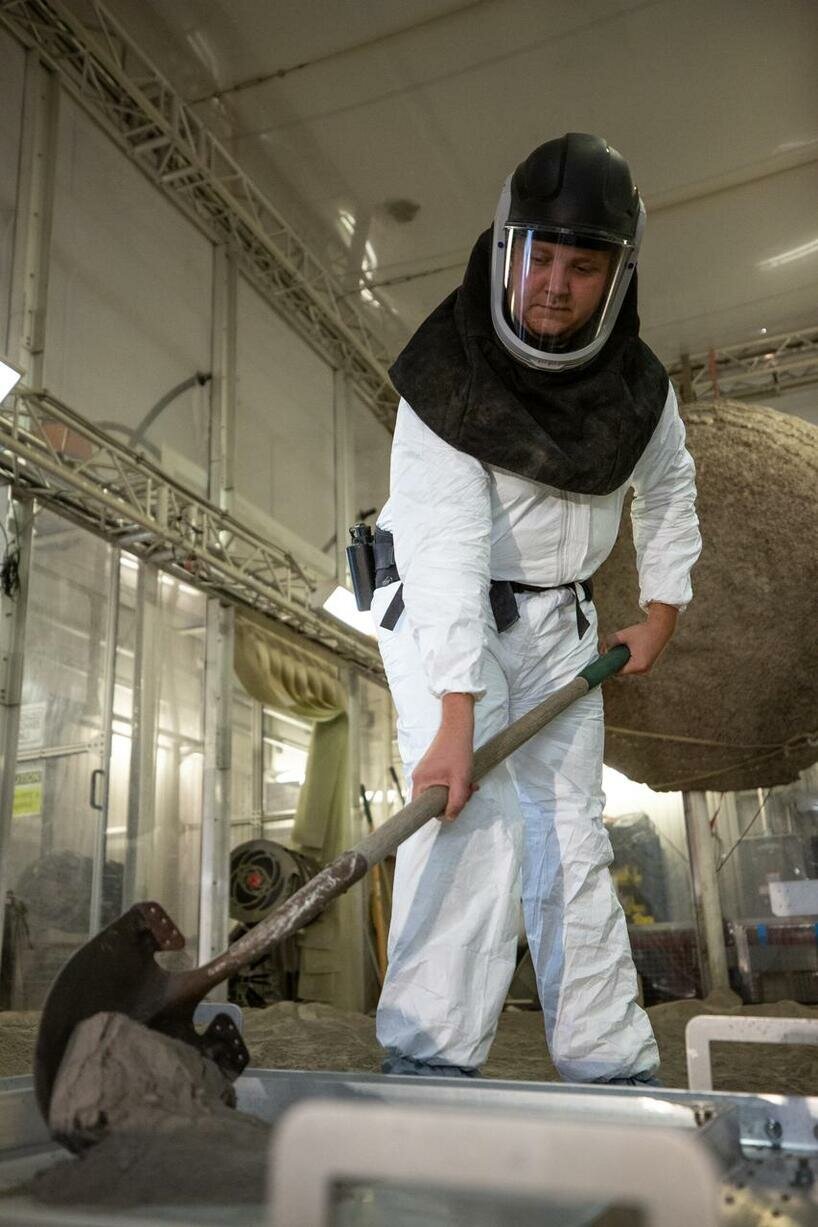
project info:
name: LINA (Lunar Infrastructure Asset)
design: AI SpaceFactory
in collaboration with: NASA
designboom has received this project from our DIY submissions feature, where we welcome our readers to submit their own work for publication. see more project submissions from our readers here.
edited by: lea zeitoun | designboom
